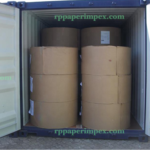Critical Issues and Challenges Faced by Paper Manufacturers
Critical Issues and Challenges Faced by Paper Manufacturers
Critical Issues and Challenges Faced by Paper Manufacturers: The paper industry is the thirteenth largest sector in India, with production exceeding 25 million tonnes annually. Even though the technology has made a lot of progress, people continue using the paper in many cases. Considering, that global paper consumption is estimated to reach 417 million tons in 2021 and 476 million tons by 2032, it becomes clear that the demand for paper will remain. This rise brings about challenges to paper makers who have to find a way to cope with the increase in demand for the product.
Hurdles like energy efficiency, raw materials supply, and environmental problems need to be overcome. Coping with these issues needs innovative ways and technological development. Nevertheless, it is much easier to say than to put into practice these solutions. This article reveals the Critical Issues and Challenges Faced by Paper Manufacturers.

Exploring Various Challenges Faced by Paper Manufacturers and Their Solutions in India
The industry of paper manufacturing has a very long history in terms of manufacturing and it is a necessary product for us in our everyday lives. However, this sector of the economy, as any other sector is faced with such questions as its sustainability and development. Here are some of the most Critical Issues and Challenges Faced by Paper Manufacturers that include:
Environmental Impact
The production of paper is completely based on raw natural resources such as wood, water, and energy. The process of taking these resources from the ground out is one reason we face deforestation, which disturbs/affects ecosystems and habitats.
In addition, such a process is comprised of chemicals and materials that may be expelled into the air and water which results in environmental deterioration. Such issues can be solved by implementing ecologically sound manufacturing practices, e.g. materials recycling, energy and water saving, and cleaner technology.
Recycling
It is because the paper scored second position among the most recycled materials. However, contamination is the most serious challenge. Water-damaged paper lowers the grade of recycled items while increasing production costs.
Reducing pollution of the water caused by this issue necessitates tightening of the collection systems preventing contamination and using the latest technologies in cleaning recycled materials.
Moreover, the enhancement of public knowledge and inclusion in the recycling programs through education programs and easily accessible recycling infrastructure similarly require attention.
Digitalization
Digital media now are more popular than a couple of years ago resulting in a declining demand for paper. This is seen as a challenge for the paper manufacturers. Adaptation involves researching the customized sector of speciality papers or the other way around could be to target either innovative usages of papers in different fields of packaging and construction and others in fabrications are costume making.
Digital Technologies can be used to run operations digitally within manufacturing processes to improve efficiency and reduce costs which will keep paper in a world where digital technology is evolving.
Globalization
Globalization has certainly opened the markets and opportunities for paper manufacturers but has also made them face complicated situations like different regulatory frameworks and market conditions.
To be in a position to adapt to global markets, the international business must realize that the strategy requires a commensurate approach that incorporates investment in research to know about the local preferences and regulations and collaborating with stakeholders to make sustainable practices and be socially responsible.
Cost
Paper production implies investments to a great extent in the machinery, facilities and raw materials. An equilibrium of costs with sustainability and quality must be achieved for longevity. Investments in energy-efficient technologies and waste reduction measures are ways to save money while at the same time meeting the goals of preserving the environment.
Cost management strategies can be seen in optimizing production processes, improving supply chain efficiencies, and innovating to remain competitive.
Supply Chain Management
Paper production requires a lengthy supply chain consisting of different service providers, processors, and players. Good supply chain management is the process of ensuring that there is a continuous stream of materials and finished products entering the market to meet customer needs while minimizing the negative effects on the environment and society.
Collaboration with suppliers and stakeholders; and transparency of sources and technologies used for traceability are crucial for the responsible management of supply chains.
Innovation
Innovation serves as a tool of competitiveness and sustainability in the paper-making domain by providing the possibility to launch new products, processes, and technologies.
Research and development operations are concentrated on making production more efficient, less environmentally unfavourable, and to meet to the changing consumer needs.
Guiding a culture of innovation within organizations, engaging with research labs, and investing in technology acquired should be the main strategies for innovation in the paper manufacturing industry.
Changing Consumer Preferences
People are increasingly opting for sustainability which in turn means that they are looking for paper products with the green. To meet these requests manufacturers of paper can produce eco-friendly products, promote recycling and responsible sourcing, and provide information to consumers regarding their sustainability efforts.
Changing consumer preferences may also have an effect by offering more diverse products looking into digital solutions, and interacting with the consumers, to realize such new preferences and behaviours.
Conclusion
Despite the potential to do so, the paper manufacturers are suffering from some difficulties such as material shortages, high utility costs, outdated technologies, environmental issues, and a shortage of worker’s skills.
These stipulations need successful control while working closely with the government and local government to develop eco-adequate solutions. These Critical Issues and Challenges Faced by Paper Manufacturers will, ultimately, bring about the development and welfare of the paper industry in India.





